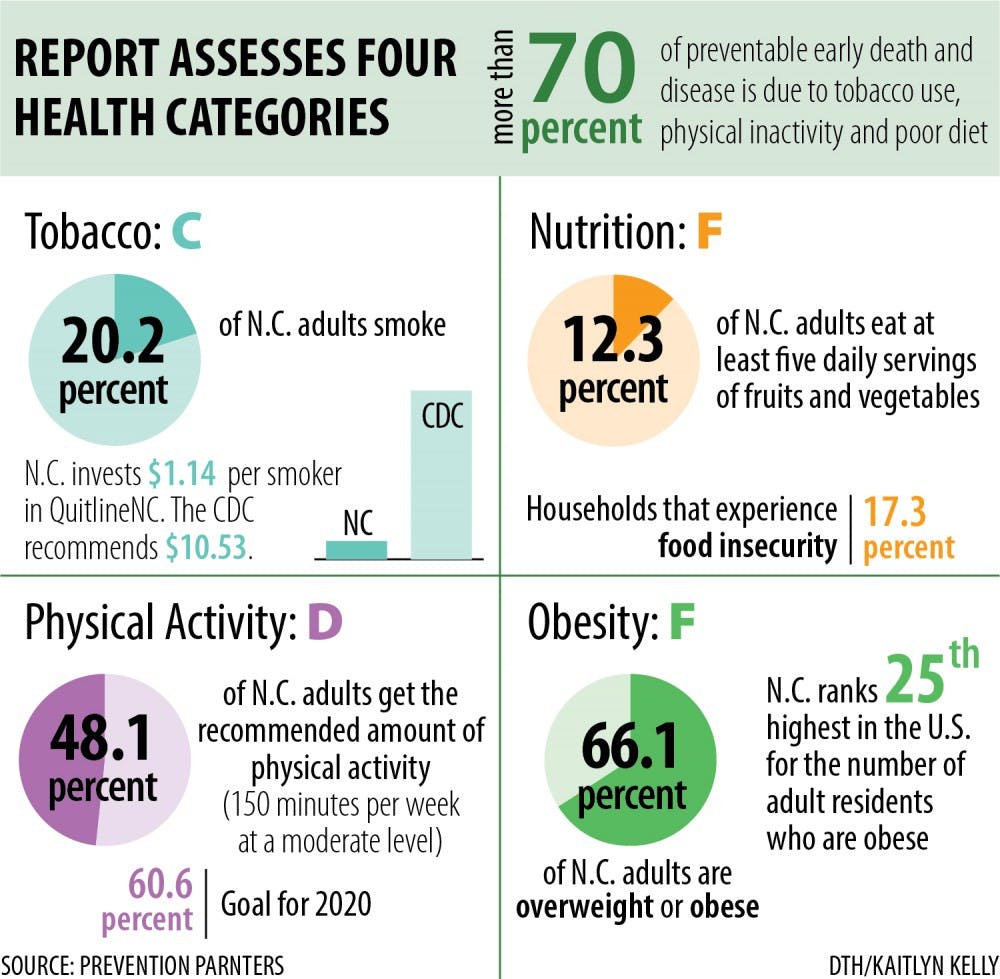Rachel Zucker, a research fellow at Prevention Partners, a nonprofit that published the study, said the state’s tobacco prevention policies have stagnated, compared with increases in other states.
“As time passes, if we haven’t done much to improve in tobacco, the status quo doesn’t keep us at the same place,” she said.
North Carolina’s smoking rate of 20.2 percent is slightly higher than the national rate of 19 percent, and 60 percent of in-state smokers are trying to quit, which is markedly higher than the national average.
Adam Goldstein, a professor at UNC’s medical school, said while tobacco users have become more aware of the dangers of cigarettes, the landscape of tobacco use is changing.
“As we really focus on predominantly cigarettes, what we discover is that the tobacco industry markets all sorts of other products increasingly aggressively to at-risk individuals,” Goldstein said.
He said hookah and cigars are becoming increasingly popular, although cigars have also been shown to significantly increase the risk of cancer.
Goldstein said excise taxes, clean indoor-air policies and phone hotlines are among the most effective ways of curbing smoking rates.
The quit lines, Goldstein said, are helpful because they are accessible and allow smokers to contact professionals who can develop a plan to quit, or provide aids like nicotine patches. He estimated that counseling and medication can increase quit-smoking rates by two or three times.



